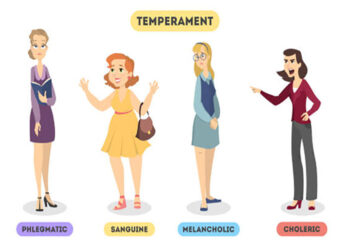
For a long time, I constantly heard about the five long languages without knowing much about them until recently when I came across Gary Chapman, the well-respected counselor who discovered the five love languages which he talked about in the New York Times Bestseller published in 2015 titled “The 5 Love Languages: The Secret to Love that Lasts.”
Gary Chapman discussed how understanding love languages can impact any relationship. Knowing your love language as well as your partner’s can significantly impact your experience in the relationship.
If you are also interested in exploring these love languages, their impact on your relationship, and how you can use this knowledge to your advantage, this post promises to open you up to even more.
What are Gary Chapman’s 5 Love Languages?
As a marriage counselor for over 20 years, Gary Chapman discovered five predominant needs all couples have in a relationship which he called the love languages. According to him, understanding the five love languages is a simple yet highly effective way to strengthen your connections and experience greater joy, bliss, and harmony in a relationship.
Below are the love languages and what they each mean in a romantic relationship.
1. Physical Touch
Physical touch is the love language that is expressed in terms of closeness and warmth. People who have this love language receive the most affection through physical touches and bodily contact. These could be through hugging, cuddling, holding hands, kissing, etc.
Physical touch is a great way of expressing and receiving affection, and there is a biological reason for this. Skin contact between partners has been shown to trigger the release of feel-good hormones like serotonin, dopamine, and oxytocin, which have been linked to pleasure among humans.[[1]The Healing Power of Human Touch – UHealth Collective
Gary Chapman discussed that people who have physical touch as their primary love language might feel love-deprived if their partner does not express affection to them that way.
2. Quality Time
Quality time is another love language concerned with the expression of affection and love through spending time with undivided attention with your partner. It is a gesture that signals to someone that you value and deeply care about them.
Spending quality time involves giving your full presence to your partner when you are with them. In a world full of distractions, giving undivided attention to your partner can be a very important way to express love to your partner.
Gestures of giving quality time can include listening to your partner with rapt attention, pausing personal tasks to attend to them, or putting off and turning down your mobile phone’s screen to pay attention to your partner’s presence.
While this may look like a simple and common act, expressing this love language is a big factor in the dynamics of many relationships, especially where quality is a dominant love language for one or both partners. In expressing quality time as a love language, quality is more important than just quantity.
3. Words of Affirmation
Gary Chapman identified that simple words like “Thank you for taking out the garbage” or “I am so lucky to be with you” can make a whole lot of difference in a partner’s satisfaction in a relationship. To some people, words of affirmation are the best way to express affection, romance, or love.
Words of affirmation can uplift their spirit, and motivate them to be more productive and successful, etc., and to such people, these are essential needs that need to be satisfied. Words of affirmation express appreciation, support, respect, and understanding to your partner.
Other examples of words of affirmation include:
- Everything is better when you are here.
- I so much love it when you beam your beautiful smile at me.
- I couldn’t do this without you.
- Look at the way you made the dress look so beautiful.
- Where would I have been without you?
Someone who has words of affirmation as their primary love language might find the relationship unfulfilling when they don’t get it from you.
4. Acts of Service
Acts of service make your partner feel loved. It conveys your willingness to help them when they are experiencing some difficulties, and to some people, this is the most important way they expect you to show them love.
Acts of service involve rendering a service to your partner. Examples include cooking a meal for your partner, washing the dishes, vacuuming the floor, fixing computer issues, or getting the car washed.
According to Gary, he found that this simple expectation of acts of service can be a major cause of dissatisfaction in a relationship if not attended to.
Different people have different acts of service that appeal to them more. Thus, you need to pay attention to your partner’s preference and how they want you to demonstrate love to them through acts of service.
5. Receiving of Gifts
While receiving gifts seems to be a very common love language for most ladies, men also have this love language. Giving gifts is a traditional way of expressing love and affection because love is giving.
Gifts portray that someone of thinking of you or wants to make you happy. It is a sign that someone appreciates you for loving them the way you do, and it can be by symbolic items like flowers, rings, or love cards, to other things like getting your partner a car, a bag, clothes, jewelry, or a simple box of chocolate.
As simple as this may look, receiving gifts is an important emotional need for some partners, especially from someone they love. It makes them feel loved which can make them love you even more.
Sometimes, it’s not so much about the gift itself but its intent. Cultivating the culture of giving gifts to your partner can keep the romantic fire burning, especially when you identify that receiving gifts is your partner’s primary love language.
How to Know Your Love Language
We all have the five love languages in different proportions but everyone has a primary love language that appeals to them the most. Knowing your primary love language is not so difficult considering that it is based on how you feel.
You simply need to take a moment of self-reflection to think about what gives you the most happiness. Do you think you prefer to have your partner spend more time with you, hold you in certain ways, give you gifts, give you powerful words of encouragement, or render a helpful service to you? This gives you a place to start in the process of unraveling your love language.
Gary Chapman also developed a set of quizzes that help people find their primary love language as you can see here.
Importantly, you need to be able to communicate your love language to your partner properly, and even more importantly, you need to know your partner’s primary love language as well.
How to Know Your Partner’s Love Language
Identifying your partner’s primary love language can help you express love to them in the way that appeals to them the most. Not knowing your partner’s love language, or not expressing affection to them that way can affect the amount of love they feel from the relationship.
Thus, it is important not only to know your love language but also to know your partner’s love language as well. The following tips can help you know your partner’s primary love language and keep the emotional fire burning in the relationship.
1. Observe their behavior
Notice how your partner expresses love toward you or others. People often show love in the way they prefer to receive it. If your partner frequently compliments you, their primary love language might be Words of Affirmation. If they are always offering to help, it might be Acts of Service, and so on.
2. Pay attention to their complaints
Paying attention to your partner’s complaints is one of the best ways you can know what their primary love language is. If your partner feels neglected or feels that you are not expressing love to them in their love language, their complaints might reveal what the love language is. For example, if they say, “We don’t spend enough time together”, their love language could be Quality Time.
3. Ask them directly
It can also help to ask your partner about how they prefer to be loved. If they are not already familiar with the five love languages, you can introduce them to them and ask them which of them resonates most with them.
4. Test each and observe their response
Experimenting with different love languages is another basic way to know your partner’s primary love language. Give them compliments, spend quality time together, help with tasks, offer more physical touch, and buy them more gifts. Then see which actions make your partner feel happiest and most connected to you.
It is important to add that identifying your partner’s love language does not mean you would ditch the others. You only need to prioritize the love language while keeping up with the others.
5. Take the quiz together
As mentioned earlier, Gary Chapman developed a quiz to help people know their primary love language. After you have checked yours, you can take the quiz together with your partner to know each of your love languages together. Click here to see the quiz.
Can a person have more than one love language?
Yes, while most people have a primary love language, they can also resonate with one or more of the others. It is common for individuals to express or receive love in multiple ways, even though will often be dominant.
What are the five love languages?
The five love languages are physical touch, words of affirmation, acts of service, receiving gifts, and quality time.
Can a person's love language change over time?
Yes, a person's love language can change based on life circumstances or personal growth. For example, someone may prioritize Quality Time during a stressful period, whereas they might have preferred Physical Touch at another point in their life. Also, a person may prioritize words of affirmation when going through a phase that requires them to stay mentally strong to become successful.
Is physical touch only about sex?
No, physical touch includes many forms of non-sexual touch like hugging, hand-holding, and cuddling. These actions are just as important for those whose primary love language is Physical Touch.
Can love languages be applied to non-romantic relationships?
Yes, love languages can be applied to any relationship, including friendships, family dynamics, and even professional settings. Understanding love languages helps improve communication and connection in various types of relationships.
How does the love languages improve my relationship?
Understanding and applying love languages can enhance emotional intimacy, communication, and satisfaction in relationships, helping both partners feel more appreciated and understood.
Final words
Understanding the Five Love Languages by Gary Chapman is an invaluable way to rekindle love in your relationship. It is important to learn more about your partner’s love language and express love to them in those ways.
Like every other language, love languages refer to how we want love to be communicated to us. Let me know in the comments section what your primary love language is, and how you want your partner to communicate it to you.

















